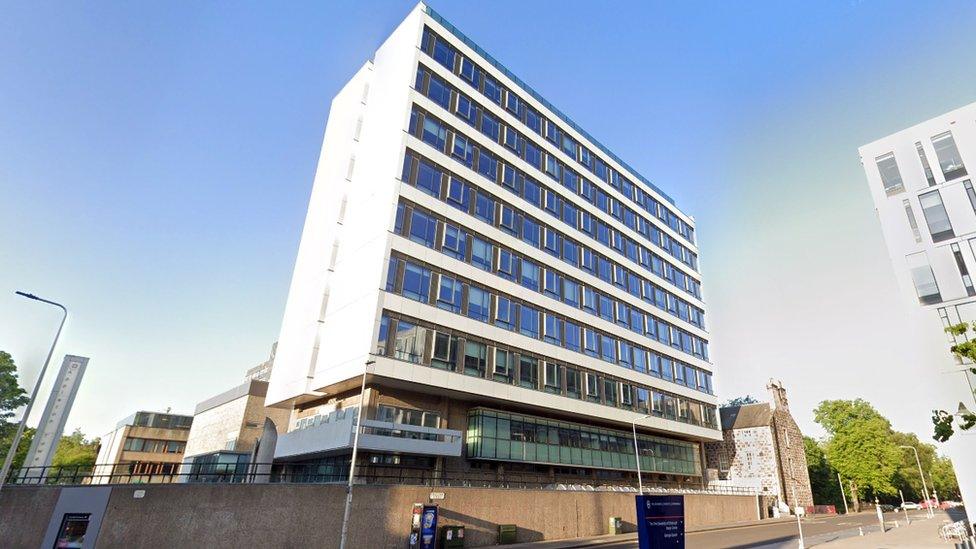Nine Scottish universities close buildings over Raac concrete
- Published

Raac has affected buildings at the University of Edinburgh
Nine universities in Scotland have closed or partially closed some of their buildings after potentially dangerous concrete was found.
Reinforced autoclaved aerated concrete (Raac) was discovered in areas including lecture theatres, science labs and student unions.
In some cases, tutorials have had to be moved to different sites on the campus.
Meanwhile, the first minister has said the government knew about Raac for "not just many months, actually, for years".
Humza Yousaf also told First Minister's Questions the number of schools known to contain Raac has increased to 40, with fire stations and NHS buildings also affected.
"Each school, given the Institute of Civil Engineers guidance, will then choose to take the appropriate mitigation," he said.
The universities affected in Scotland are:
University of Edinburgh
University of Aberdeen
University of Abertay, Dundee
University of Dundee
Edinburgh Napier University
University of St Andrews
University of the Highlands and Islands
University of Stirling
Heriot-Watt University, Edinburgh
Four universities in England and Wales have also confirmed full or partial closures.
Stirling University Student Union had to partially shut following a structural safety inspection on Wednesday.
The closure will affect the upper floor of the building.

Stirling University Student Union has had to partially close
The union said it was "gutted" to make the closure at the start of term, when it was welcoming new students.
The closure will affect the Studio bar, staff offices, and the media office. The union said it aimed to reopen its Starbucks from Thursday with a limited menu.
It said in a statement: "We are also able to put on a range of evening activity. It may however mean that some events may not go ahead as planned.
"We are gutted, as it isn't the start to the term we've been hoping for, but rest assured we'll do all we can to still make it a welcome to remember."
Safety of students
An NHS Scotland review has identified 254 of its buildings that "have two or more characteristics which are consistent with the presence of Raac".
Mr Yousaf said that out of 40 of those buildings that have been more closely inspected so far, nine have been found to contain Raac.
Earlier, during FMQs questioning by Scottish Labour leader Anas Sarwar, Mr Yousaf said a list of affected schools should be made available by the end of the week, with a ministerial statement to follow.
The first minister said the government was working with local authorities and that discussions would be held with the UK government over extra funding to address the problem.
Education Secretary Gillian Keegan said the Scottish government's top priority was to ensure the safety of students, pupils and staff.
She added: "Thanks to the hard work of schools, colleges, councils, diocese and academy trusts, the majority of settings where Raac has been confirmed have opened to all pupils for the start of term."We are expediting surveys and urging all responsible bodies to tell us what they know about Raac, so we can be confident that settings are safe and supported."